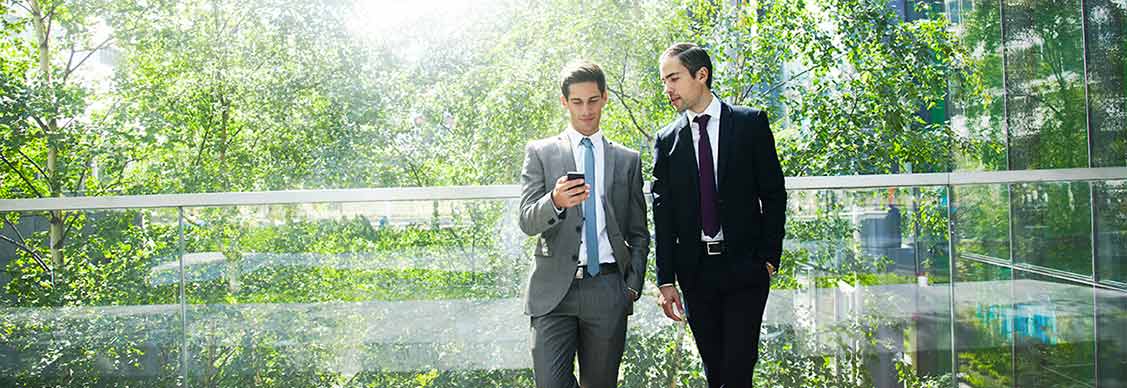How regulations are pushing landlords to act sustainably
Investors are tapping into technologies that track green performance
Government policies are pushing landlords to meet new sustainability requirements, heaping pressure on investors to back up their efforts to go green.
Take New York Law 97, which goes into effect in 2024. It applies a financial penalty to buildings that breach a set limit, with potential costs rising into the hundreds of thousands of dollars.
Such regulations are targeting aggressive energy reduction measures for commercial buildings that are typically capital intensive. Examples include everything from shifting space temperature setpoints for offices to upgrading expensive heating and air conditioning infrastructure.
“Owners are scrambling to offset energy consumption in commercial buildings to avoid penalties, but traditional energy reduction solutions are costly, time-consuming, and can often negatively impact building operations,” says Zach Denning, CEO of prop-tech company Hank.
Green platforms
In Europe, the Sustainable Finance Disclosure Regulation came into effect this year to prevent greenwashing – when a company spends more on marketing than on actually minimizing their environmental impact. SFDR requires market participants marketing financial products into the European Union to disclose the extent to which they integrate sustainability risks into their investment decision-making process, and risks on any returns.
New regulations are adding to investment capital being steered toward technologies that can better track a development’s ability to reduce its carbon footprint and show real-time energy use.
For instance, a 16-story tower in Manhattan’s Hudson Square, when completed next year, will exceed the New York City’s 2030 climate targets for office buildings by 45% and align with the city’s 2050 carbon neutral targets.
However, countless existing properties in the city have much further to go to comply with Local Law 97, which will apply a penalty of US$268 to every tC02e above the set limit. For example, say a 300,000 square foot office building uses 7.5 million kWh of electricity per year and 80,000 therms of natural gas. That building would exceed initial limits by 54.1 tC02e, a penalty of $14,500, which would increase to $330,470 in 2030 as limits harshen.
Ramya Ravichandar, VP Sustainability Products at JLL/T, says as energy reduction mandates become increasingly common, investors must have policies in place as anchor points.
Asset managers are increasingly tackling the mandates by investing in AI platforms that help them understand how energy is being used in their buildings and allow them to create more efficient systems through predictive technology.
A $600 million residential and office complex in Los Angeles, expected to be completed in 2025, will use technology to track environmental performance and metrics, including eliminating tenant emissions by procuring 100% renewable energy.
Platforms, such as Hank, which was acquired by JLL earlier this year, work by creating a digital twin of a building to learn how it operates and then generating a full system audit that details where it can make efficiency adjustments and autonomously deliver actions that span energy savings, asset longevity, comfort scores, and indoor air quality.
“From regulations to local laws to investors demanding more transparency around capital allocation, there is a tremendous push on impact investing,” Ravichandar says. “While sustainability is the big theme across the board, we see a technology like Hank – the first of many disruptive tech that we are going to own – as being a necessity if you want to make a move in the space. Their capabilities around improving tenant comfort, reducing energy consumption, and bettering indoor air quality, are just the beginning.”
Costs and benefits
While the technologies are still a long way off from universal implementation, there are signs long-term costs savings could draw in investors.
Emerging evidence indicates that green buildings are a higher-value, lower-risk asset than standard structures.
Besides lowering energy consumption and operational costs, greener buildings typically achieve higher sale premiums and attract and retain more tenants, ensuring a more continuous revenue stream. A 2020 study from the MIT Real Estate Innovation Lab found that healthy buildings have up to a 7.7% premium on effective rents compared to neighboring buildings that lack the same certification.
Ravichandar says tools that create an ecosystem that is more transparent to investors wanting to reduce their carbon footprint will continue to gain traction as the world tunes into climate risks.
“Climate action no longer sits in the optional category of corporate responsibility,” Ravichandar says. “Today, the commercial incentives for taking climate action are proving too big to ignore, whether it’s the demands of employees, the ability to hire the best talent, or even the avoidance of penalties such as those in New York. The business case is clear across all sectors.”
Click here to learn more about how you can elevate your asset.
